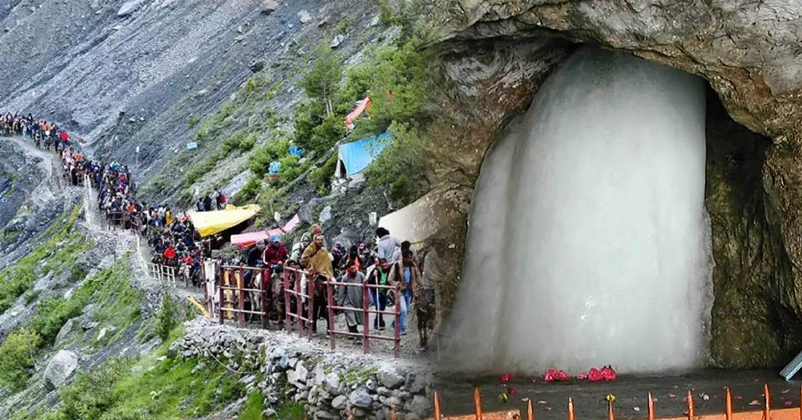Lucknow: Planning a pilgrimage to the Amarnath Cave, one of the most revered sites in Hinduism, requires careful consideration of various factors including timing, physical preparation, and logistical arrangements. The Amarnath Yatra is a challenging journey due to its high altitude and difficult terrain, making it essential for pilgrims to be well-prepared. Here’s a comprehensive guide to help you plan your pilgrimage:
1. Understanding the Yatra: The Amarnath Yatra is an annual pilgrimage to the Amarnath Cave located in Jammu and Kashmir, India. Inside the cave, a natural ice Shivling forms, which is considered a manifestation of Lord Shiva. The Yatra typically takes place between late June and August, coinciding with the auspicious month of Shravan.
2. Registration and Permits: Registration is mandatory for all pilgrims. It typically opens a few months before the commencement of the Yatra. Pilgrims must obtain a Yatra Permit that is date-specific and route-specific. You can register online through the official Amarnath Yatra website or through designated banks. Ensure to keep multiple copies of the permit for the journey.
3. Choosing the Route: There are two main routes to the Amarnath Cave:
- Pahalgam route: This is the longer and more traditional route, about 45-48 km one way, taking about 3-5 days. It is generally considered more scenic.
- Baltal route: This is the shorter route, about 14-16 km one way, which can be completed in 1-2 days. It is steeper compared to the Pahalgam route.
Decide on the route based on your physical capability and time availability.
4. Physical Preparation: The Yatra involves trekking at high altitudes, reaching up to 4,000 meters. It is advisable to undergo physical training at least a month before the Yatra. Focus on cardiovascular exercises, stamina building, and acclimatization to higher altitudes. Consulting a doctor before undertaking the journey is also recommended, especially for those with medical conditions.
5. Packing Essentials: Prepare for extreme cold and unpredictable weather. Essential items to carry include:

- Warm clothing in layers
- Waterproof clothing and trekking shoes
- Sunscreen, sunglasses, and a hat
- Personal medical kit
- Energy bars and personal water bottles
- Important documents including ID, Yatra Permit, and medical certificate
6. Accommodation and Logistics: Along both routes, tented accommodations and langars (free community kitchens) are available. However, booking private accommodation in advance is advisable if you prefer more comfort. Arrange transportation to the base camp (Pahalgam or Baltal) well in advance.
7. Safety and Etiquette: Adhere to safety guidelines and follow the instructions of the Yatra administrators. Be respectful of the environment and other pilgrims. The region is ecologically sensitive, so avoid littering and use eco-friendly products.
8. Insurance and Emergency Contacts: Consider purchasing travel insurance that covers high-altitude trekking and medical emergencies. Keep emergency contacts handy, including those of local authorities and Yatra control rooms.
9. Connectivity: Mobile connectivity can be erratic on the trails. Inform your family about your schedule and check-in regularly via satellite phones available at camps.
10. Spiritual Preparation: While the physical journey is demanding, the spiritual aspect of the Yatra is paramount. Prepare mentally and spiritually, perhaps meditate and practice yoga to maintain inner calm and presence during the pilgrimage.
By carefully planning and preparing, you can ensure a fulfilling and safe pilgrimage to the sacred Amarnath Cave, creating a memorable spiritual journey.





